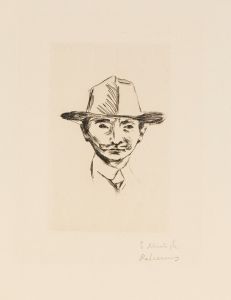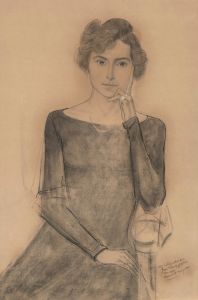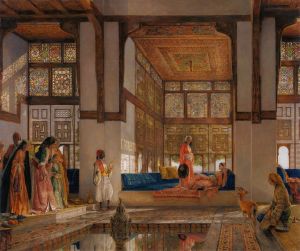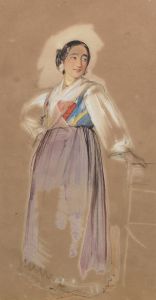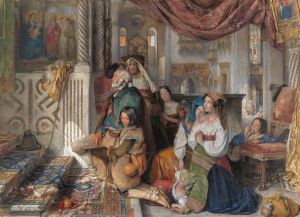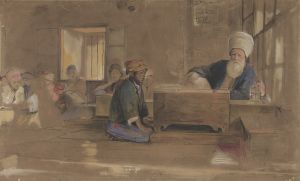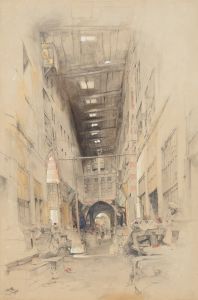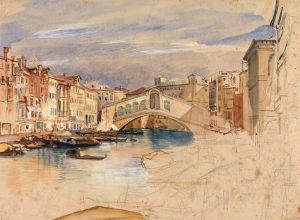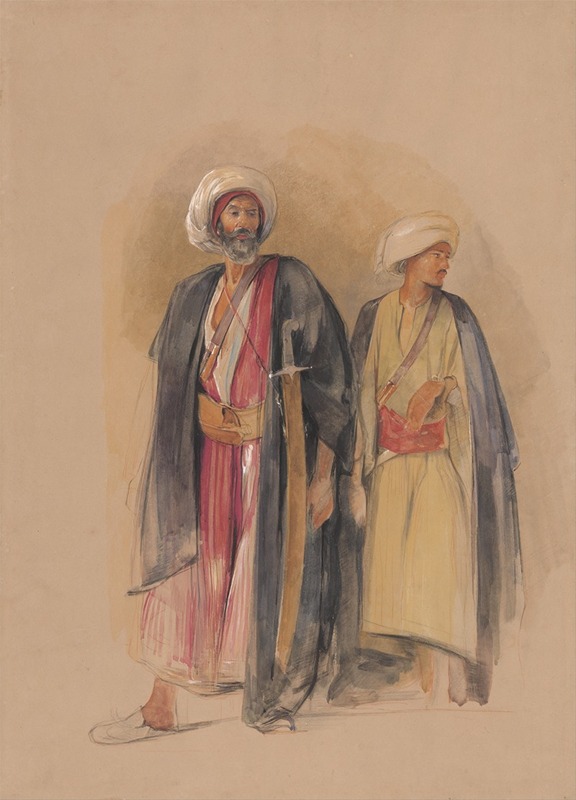
Sheik Hussein Of Gebel Tor And His Son
A hand-painted replica of John Frederick Lewis’s masterpiece Sheik Hussein Of Gebel Tor And His Son, meticulously crafted by professional artists to capture the true essence of the original. Each piece is created with museum-quality canvas and rare mineral pigments, carefully painted by experienced artists with delicate brushstrokes and rich, layered colors to perfectly recreate the texture of the original artwork. Unlike machine-printed reproductions, this hand-painted version brings the painting to life, infused with the artist’s emotions and skill in every stroke. Whether for personal collection or home decoration, it instantly elevates the artistic atmosphere of any space.
John Frederick Lewis was a British Orientalist painter known for his detailed and vibrant depictions of Middle Eastern life. Born in London in 1804, Lewis initially trained as an engraver before turning to painting. He traveled extensively throughout Europe and the Middle East, drawing inspiration from the cultures and landscapes he encountered. His works are celebrated for their meticulous attention to detail and vivid portrayal of the people and places he observed.
One of Lewis's notable works is "Sheik Hussein Of Gebel Tor And His Son." This painting is an example of Lewis's fascination with the Middle East and his ability to capture the essence of its people and culture. The painting depicts Sheik Hussein, a figure of authority and respect, alongside his son. The setting is likely inspired by Lewis's travels in the region, where he spent several years immersing himself in the local culture.
Lewis's time in the Middle East, particularly in Egypt, greatly influenced his artistic style. He lived in Cairo for nearly a decade, from 1841 to 1851, during which he produced many of his most famous works. His paintings from this period are characterized by their rich color palette, intricate details, and a sense of authenticity that comes from his firsthand experiences.
"Sheik Hussein Of Gebel Tor And His Son" reflects Lewis's skill in portraying the human figure and his deep respect for the subjects he painted. The painting likely features traditional Middle Eastern attire, with attention to the textures and patterns of the fabrics. Lewis was known for his ability to render textiles with remarkable precision, capturing the play of light and shadow on different materials.
The relationship between the Sheik and his son is a central theme of the painting, highlighting the bond between generations and the transmission of cultural values. Lewis often focused on such intimate and personal aspects of life in his works, providing a glimpse into the everyday experiences of the people he depicted.
Lewis's paintings were well-received in his time, and he exhibited regularly at the Royal Academy in London. His works contributed to the Victorian fascination with the Orient, a term used to describe the Middle East and North Africa during the 19th century. While Orientalism as a movement has been critiqued for its exoticizing tendencies, Lewis's paintings are often praised for their respectful and nuanced portrayal of their subjects.
Today, John Frederick Lewis is regarded as one of the leading figures of the Orientalist movement in British art. His works are held in major collections, including the Victoria and Albert Museum and the Tate Gallery in London. "Sheik Hussein Of Gebel Tor And His Son" remains an important example of his artistic legacy, showcasing his ability to blend detailed observation with a deep appreciation for the cultures he encountered.









